Beyond COVID-19

What do UTokyo’s efforts made under activity restrictions reveal about the University’s direction in this new era?
In 2020, due to the pandemic, activities at UTokyo drastically changed in ways we had never expected. In this issue of Tansei, we record various efforts made at UTokyo over the past six months to offer a chance to think about the University’s activities in the COVID-19 era.
Beyond COVID-19
Roundtable discussion by the president, executive vice president, and dean of the College of Arts and Sciences
The novel coronavirus is sowing confusion around the world. Naturally, the University of Tokyo’s experience is no exception. However, this does not mean that the University has been compliant or silent in its response to the virus. What has the University managed to accomplish over the almost half-year since the outbreak of the COVID-19 pandemic, and how? The University’s president, who marked the final year of his tenure alongside COVID-19, our executive vice president presiding over the university-wide measures to deal with the pandemic, and the dean of the College of Arts and Sciences, in charge of 6,600 first- and second-year students, all sat down together to look back and discuss future prospects in a roundtable format.
(This roundtable was held on July 10, 2020.)
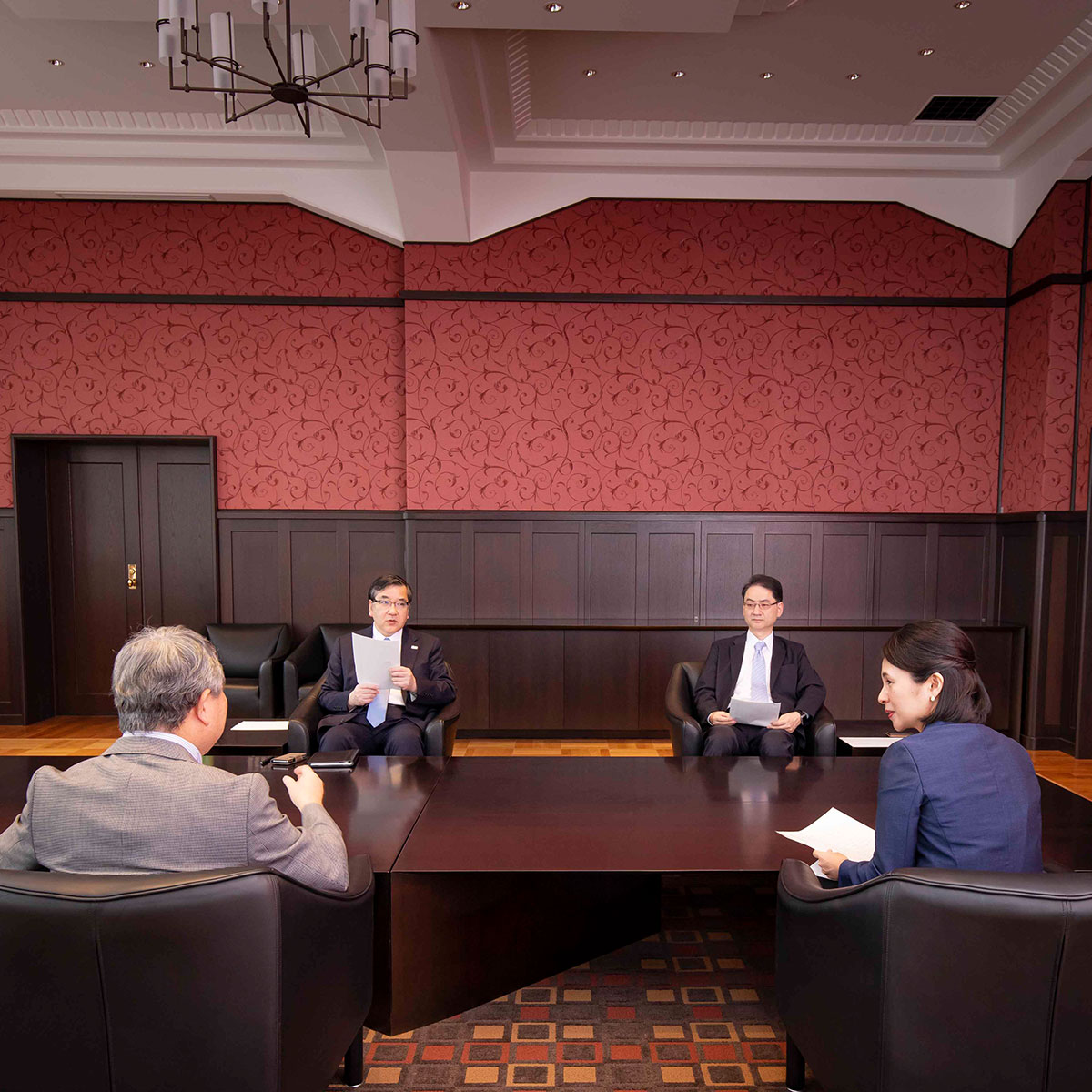
- Yokoyama (moderator): Over the past several months, UTokyo has been busily engaged with its response to the coronavirus. I am hoping that we can take a pause here to take stock and reflect. Komaba Campus was particularly quick to respond, wasn’t it?
- Ohta: That’s right. One of the factors here was that the entrance examinations for PEAK (the English-language undergraduate courses offered by the College of Arts and Sciences) began in January. The face-to-face interviews that we normally conduct overseas had to be switched to an online format, which helped us prepare. Another factor was the existence of our East Asian Academy for New Liberal Arts (EAA), a program that we have established in partnership with Peking University. We received information from Beijing early on from Professor Tsuyoshi Ishii, a member of EAA, and we were surprised to hear that they would be delivering 2,500 classes in an online format. With the idea that things would be riskier after the Chinese New Year, instructions were issued on January 30 that students returning from China would need to self-isolate at home for a period of two weeks. Following a similar university-wide initiative, a Komaba-based task force was set up on March 12. Then, on March 19, we launched a color-coded display system for communicating activity restriction levels. The colors, which happened to end up being the same as those employed by the Tokyo Metropolitan Government, were posted at the University’s main gate and on the top page of the University website.
From the start, delaying the commencement of classes was not an option
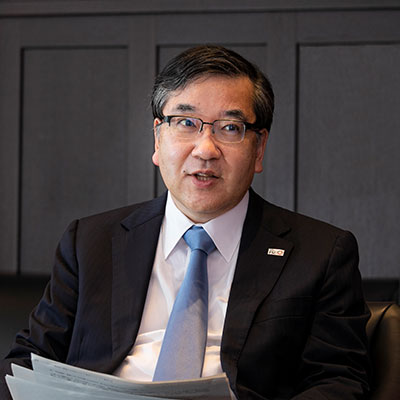
Makoto Gonokami
Took office in April 2015. A specialist in quantum optical physics. His Japanese publications include Henkaku wo Kudo suru Daigaku [The University as a Driver of Transformation] (University of Tokyo Press, 2017) and Daigaku no Mirai Chizu [A Future Map of the University] (Chikuma Shinsho, 2019).
- Gonokami: So the rapid response in Komaba’s initial motions was related to its exchanges with China in the EAA. It brings home to me once again the value of global exchanges within the University, including PEAK. Looking back, when I traveled overseas to attend the World Economic Forum in Davos, Switzerland in late January, the coronavirus outbreak hadn’t yet caused much of a stir. Once the news of the infection on the luxury cruise ship (the Diamond Princess) that emerged in February began to be covered widely in the daily news cycle, it ceased to be something that we could think of as a problem that only concerned others. What concerned us the most initially was the possible impact on the entrance examinations, which were imminent, and the feeling was that we could just pray that we would be able to carry them out safely. Major events scheduled for March were postponed across the board, and this raised concerns about what we would do about activities that were to take place from April onward. However, from the very beginning, the option of delaying the commencement of classes was not something that I ever considered.
- Yokoyama: The idea of altering the academic calendar never crossed your mind, from the very start?
- Gonokami: I intuitively felt unable to discern what lay ahead, and that the only choice was to proceed in whatever way we could. Some expressed the view that things would settle down by summer, but my own feeling was that if we postponed things then there would be no end of it. There was some anxiety over holding online classes, but I heard from Masaru Kitsuregawa, the director general of the National Institute of Informatics (NII), that an information studies colloquium was to be held online in early March. I visited the NII to observe how things were run at the operations secretariat, and I saw that things worked very smoothly. One of the advantages that I was most deeply impressed by was that participants were able to quickly move between parallel sessions.
- Yokoyama: So, that experience was one of the factors that led to your decision.
- Gonokami: In online classes, aside from considerations for students poorly equipped to access an online environment, there was also the issue of copyright. Given data transmission constraints, I felt it essential that on-demand distribution should be offered in combination with synchronous two-way learning. Although the Copyright Act had been amended so that copyrighted material could be also used smoothly in on-demand classes, discussions about class implementation methods were still in the middle of being carried out and the amendment was yet to come into force. Feeling that it would be necessary to have the amendment take effect sooner so that resources could be properly used, at the end of March we hurriedly submitted a joint request to the Agency for Cultural Affairs and the designated management association signed by the presidents of Japan’s seven former Imperial universities and the director general of NII. Thanks in part to this request, we were able to make use of copyrighted material free of charge for the current academic year. After that, what I remember about March was the Commencement Ceremony. We were of two minds about whether we should cancel it but decided to hold it in a significantly curtailed format. By coincidence, one of the student representatives happened to be from Wuhan, China, and she delivered quite a wonderful message, making for an impressive ceremony.
- Ohta: Also, after reading your address, someone in Zhejiang Province donated a large shipment of masks to Komaba.
- Fukuda: The university-wide task force issued an important notice on March 30 to the effect that those returning from overseas were to observe a two-week period of self-isolation at home. A survey of the number of members of the University returning from overseas carried out in mid-March found that this amounted to as many as 1,500 people. Feeling that this would be a serious matter, we moved quickly to issue the request. I think that this was a major factor in preventing the spread of infections on campus.
- Yokoyama: The policies described in the president’s message for March 18 included that classes would be held as per the academic calendar, an encouragement toward online classes, the streamlining of the Commencement Ceremony, cancellation of the Matriculation Ceremony, and restricted campus entry permissions.
- Fukuda: The decision to hold classes according to the academic calendar was down to the president’s decisiveness and leadership.
- Gonokami: Normally, I would make space for deliberation, but not in cases where the conclusion is obvious for a decision of such considerable import. I am conscious of the fact that to allay the spread of unnecessary risk, it falls to me to take responsibility and make decisions. If I had opened consultations to many people, there is a chance that UTokyo may have had to delay things as well.
- Ohta: It was a decision that many faculty members were hoping for, myself included.
- Yokoyama: How did you decide on the timing of the five president’s messages that you had issued by June?
- Gonokami: Some of them I wanted to issue myself, while others were issued at the request of executive members of staff. In each case, I felt that on occasions when the University president imposes severe restrictions, it is essential to clearly lay out the administration’s intentions and to gain the understanding and support of the University community.
- Ohta: With organizational risk communication, it is important to convey the administration’s line of thought as appropriate, isn’t it.
- Gonokami: I wrote those messages with the idea of conveying how UTokyo understands the pandemic to the University community and beyond. I also did my best to share a brighter perspective without being overly pessimistic.
- Yokoyama: I think you were successful at conveying a positive attitude. Now, at the beginning of April, you issued the six-stage guideline on activity restrictions, which was divided into levels of 0, 0.5, 1, 2, 3 and 4.
- Fukuda: We drew on the example of Harvard University as a reference, but that did not include criteria for reinstating regulations. So, we added the 0.5 level later on. That’s why it’s the odd one out. Even so, we received some criticisms about raising the restriction level relatively quickly from 1 to 2 to 3 during the period when there was a high degree of tension.
- Gonokami: Given that infections in Europe and the United States spread rapidly toward the middle of April, there were concerns that similar things would happen in Japan. Around the time that we raised the restriction level, you know, I was tense every day. I remember talking with Dr. Yasuyuki Seto, the director of the University of Tokyo Hospital, and getting the sense that medical activities were ramping up. Fortunately, he was able to steer the course without any in-hospital outbreaks or reducing major surgeries.
- Fukuda: There was a general division of roles by which mild cases were treated at the Institute of Medical Science’s hospital, while severe cases were sent to the University of Tokyo Hospital, and this collaboration worked quite well.*
- Ohta: President Gonokami, prior to the coronavirus pandemic, you were talking about trying to promote collaboration between the two hospitals.
- Gonokami: In the end, that might have set us in good stead.
| Jan. | K | 30 | Instructions are given to self-isolate for two weeks when arriving / returning from China |
| Mar. | 11 | Launch of online classes and a web conferencing portal site | |
| 18 | President’s message (No. 1) is posted | ||
| K | 19 | “Stage Yellow” notice posted; newly admitted students and their parents are requested to prepare for online classes | |
| 23 / 24 | Commencement Ceremony and Diploma Presentation Ceremony are held on a smaller scale | ||
| K | 24 | Admissions procedures for newly admitted students are carried out face-to-face at a suitable distance | |
| 26 | Students are asked to suspend extracurricular activities | ||
| K | 27 | Transition to “Stage Orange” | |
| 30 | The Task Force instructs deans to require a two-week isolation period for travelers coming from overseas | ||
| 31 | A notice is released that classes will be moving to a fully online format | ||
| Apr. | 1 | Request issued for the early enactment of the Compensation System for Public Transmission for Educational Purposes | |
| 2 | President’s message (No. 2) is posted | ||
| 3 | Activity Restrictions Index is established in a 6-stage format; announcement of a transition to Level 2; restrictions are imposed on the public for campus entry | ||
| 6 | Activity Restrictions Index is raised to Level 2 (Severe restrictions); face-to-face meetings are prohibited | ||
| K | 7 | Transition to “Stage Red” | |
| 8 | Activity Restrictions Index is raised to Level 3 (Maximum restrictions); only faculty and staff continuing to carry out long-term experiments that would cause significant losses if stopped are allowed on campus | ||
| 8 | Cancellations of the May Festival and Open Campus events are announced (later to be held online) | ||
| 12 | Announcement of a message to newly admitted students in place of the canceled Matriculation Ceremony | ||
| 21 | President’s message (No. 3) is announced; COVID-19 Emergency Action Fund is set up | ||
| May |
12 | President’s message (No. 4) is posted | |
| 15 | Launch of grant-type scholarships and other emergency student support packages | ||
| Jun. | 1 | Activity Restrictions Index is lowered to Level 2 | |
| 1 | President’s message (No. 5) is posted | ||
| 15 | Activity Restrictions Index is lowered to Level 1 (Partial restrictions) | ||
| K | 15 | Transition to “Stage Orange” | |
| Jul. | 13 | Activity Restrictions Index is lowered to Level 0.5 (Minimum restrictions) | |
| K | 15 | Regular examinations for the S Semester are conducted online |
Showing the strengths of a comprehensive university staffed by experts from a wide range of fields
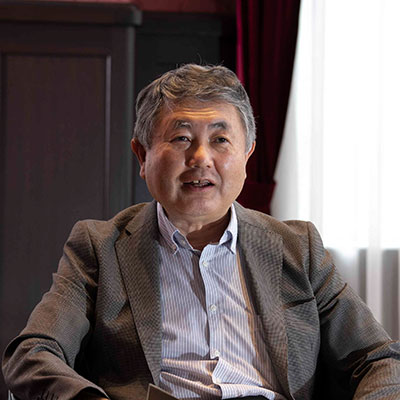
Hiroo Fukuda
A specialist in plant physiology. His co-authored Japanese publications include Shokubutsu no Saibo wo Miru Jikken Purotokoolu [Experimental Protocols for Plant Cell Observation] (Gakken Medical Shujunsha, 2006) and Shokubutsu no Sigunaru Dentatsu [Plant Signal Transduction] (Kyoritsu Shuppan, 2010).
- Fukuda: Looking back at the way we responded with online classes, I am glad that we had people with specialized knowledge on campus.
- Ohta: Having a wide range of personnel is one of the strengths of a comprehensive university, isn’t it.
- Gonokami: The field of Japanese-language education is one that quickly pivoted to an online format. The Graduate School of Engineering has also promoted the adoption of an online format, including for practical training, and I understand that an online meeting for family members of students also took place the other day. It is quite reassuring that the sites of practice are acting on their own initiative. On the other hand, while I feel that we were able to make the array of measures taken by the University evident to our students to a certain extent, this may not have been the case with regard to the general public.
- Yokoyama: The Division for Strategic Public Relations was also acting while being involved in these discussions. We exercised caution about publishing pre-prints that had not undergone peer review, and we also took care to refrain from soliciting interviews from researchers who were working hard on the front lines.
- Ohta: I feel that was a reasonable approach for the Division to take.
- Yokoyama: What do you think the situation will be like when this issue ofTansei comes out?
- Fukuda: I expect the number of infections to be continuing on an upward trajectory.
- Gonokami: In the long run, I feel that when we overcome the coronavirus pandemic, we will see some major benefits emerge as a result. However, to that end we will have to continue to show our intention to move in the right direction. I’ve long said that we should see digital innovation as a staple for an inclusive society, and I’m sure that many members of the University understand this, but I worry about the new students who have been facing the COVID-19 pandemic without being aware of this trend. I want us to be extremely careful to ensure that they are not left behind. I would like for us to continue to support those who tend to be among the more vulnerable, including our international students.
- Ohta: At Komaba, we’ve heard some people expressing the desire to take a leave of absence from their studies if we move courses online for the autumn semester. We are also experiencing a rise in the number of students seeking help from the Student Counseling Center. I believe that support is necessary, including caring for students’ mental health.
- Fukuda: It’s true that if you are at home all the time, there’s no easy escape. Under normal circumstances, you would be able to leave the house to take a breather, but voluntarily skipping out is difficult in the case of online classes.
- Gonokami: Because that’s also something that becomes apparent in conversations among friends. It must be hard not to have had any relief from tension since one’s days as an examinee. Although one can employ reference books to practice for study up through the high school level, using problems that have been set to a pattern, this doesn’t work at the university level. The presence of friends helps one realize that the situation is the same for everyone, but if you are isolated, the only choice is to apply oneself seriously out of the desire not to be the one who falls behind.
- Ohta: More serious students might be more likely to feel themselves pushed up against their limits.
- Fukuda: In the days ahead, we will be conducting university activities while dealing with COVID-19. We will all have to create a new approach to campus life in a time of pandemic.
Minimizing risk and maximizing activity
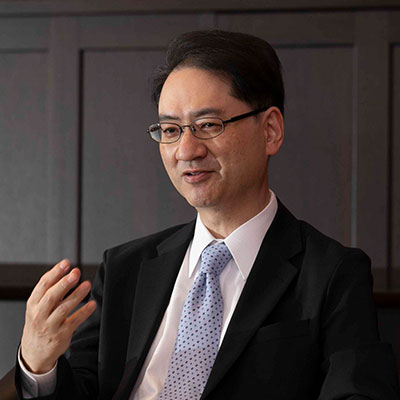
Kunihiro Ohta
A specialist in molecular biology. His Japanese publications include Seimei Tagensei Genri [The Principle of Bioplurality: An Introduction] (Kodansha Sensho Metier, 2018) and Epigenomu to Seimei [The Epigenome and Life] (Kodansha Blue Backs, 2013).
- Gonokami: I wrote about this at the end of the message I sent out in June. We will minimize risk and maximize activity. In a sense, this might be a situation akin to that of a hospital. A hospital is a place that manages risk while continuing to carry out the essential activity of treatment, and the same could be said for the university as a whole.
- Yokoyama: Are countermeasures being considered for experiments and practical training?
- Fukuda: In the case of practical training requiring close face-to-face contact, one possible response is to have people undergo PCR testing before their departure. We are also in the midst of preparing a system wherein students will attend classes after having first undergone an e-learning module.
- Ohta: At first, we didn’t have a good idea about what the coronavirus was, so we had to strictly limit our activities. However, we now understand to some extent how we can act in such a way that will be highly unlikely to result in transmission. I feel that it is the University’s responsibility to take the lead in showing society that progress is possible if we do things in a particular way.
- Gonokami: That’s exactly right. Let’s keep doing what we feel to be correct based on the evidence and continue to demonstrate that to society.
- Yokoyama: What way forward is there for international exchanges now that face-to-face activities are more difficult?
- Gonokami: In the past, even when we sought to invite outstanding researchers from overseas, moving to Japan presented a major hurdle, which made things difficult. With the COVID-19 pandemic, online activities will become more popular, and it will more often be the case that research partners will not have to come to Japan. In that case, there we should see many professors and researchers wanting to cooperate. I feel that this is an opportunity for UTokyo.
- Yokoyama: Another aspect is that more international conferences are being held online and becoming more active.
- Gonokami: So the question to ask is whether researchers from the University will increase their presence or end up lowering it. We must not let ourselves drop out of the international research community. What we need to have is a kind of audacity.
- Ohta: While it would be easier if we have already established a face-to-face network, I feel that keeping things solely online would make participation difficult for newcomers.
- Gonokami: I hope that senior faculty with established international networks will work proactively to create opportunities for exchange by involving young and mid-career faculty members.
- Ohta: On that note, 5,000 people took part in Komaba’s Friday Special Lectures for High School Students that were held online in May.
- Gonokami: Is that so? It would be great we could use that mechanism to relay president’s messages directly to high school students nationwide. Looking beyond the COVID-19 pandemic, I would like for us to prepare a number of studios to facilitate online distribution.
- Fukuda: The University of Tokyo’s past archive also contains a wealth of excellent resources, including the Global Focus on Knowledge lecture series.
A decade of change accomplished within four months
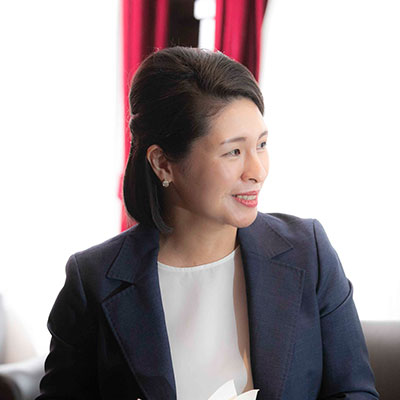
Hiromi Yokoyama
A specialist in science, technology and society studies (STS), she is cross-appointed to the Graduate School of Interdisciplinary Information Studies. Her recent Japanese publications include SNS to Gendai Shakai [Social Media and Contemporary Society] (Nihon Keizai Shimbun, in press).
- Gonokami: Due to the COVID-19 pandemic, we could say that changes that normally would have taken a decade to occur have been accomplished in the space of four months. Under normal circumstances, it would likely have been unfeasible to get 5,000 classes up and running online all at once.
- Ohta: Voting at Komaba faculty meetings also now takes place electronically.
- Gonokami: We have no choice but to keep our messaging positive as we ride out the pandemic. However, students will likely also feel pressure with regard to their grades. The decision on what major to pursue from their third year entails considerable stress. In truth I feel that it would be good if we could reform that aspect as well.
- Fukuda: But there’s also the fact that you don’t really want to change the system when you have a department full of excellent students.
- Yokoyama: We’ve arrived at a problem that is particular to UTokyo, but we are almost out of time. I invite you each to give us your closing thoughts.
- Ohta: I’ve been able to talk today in a good mood, but as we continue to be plagued by the COVID-19 pandemic, it is unclear how things will evolve in the days ahead. … Thank you all for your continued support.
- Fukuda: We are entering the phase of practicing education in an age of pandemic. I would like to invite the administration, faculty and staff, students and alumni to all work together to build a university for this age of COVID-19.
- Gonokami: Those outside the University feel troubled, unable to see the road ahead. The essential strength of universities is to create roads where none yet exist. In other words, now more than ever is the time for universities to shine. Universities put good things into practice and convey them to the world. I would like to overcome our present difficulties while sharing with everyone the knowledge that this fact is worthy of our motivation and engagement.
- Yokoyama: Now is the time for universities to shine. That’s a message to take to heart once more.
Photos: Junichi Kaizuka
Note
* With respect to matters such as palliative care, diagnostic imaging, robot-enabled or minimally invasive surgeries and rehabilitation, the Institute of Medical Science Hospital and University Hospital are working together closely to promote the Shirokane / Hongo Special Project on Functional Enhancement.
** This article was originally printed in Tansei 41 (Japanese language only). All information in this article is as of September 2020.






